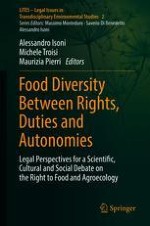2018 | OriginalPaper | Buchkapitel
Regional Quality Labels for Agro-Food Products
verfasst von : Clelia Losavio
Erschienen in: Food Diversity Between Rights, Duties and Autonomies
Aktivieren Sie unsere intelligente Suche, um passende Fachinhalte oder Patente zu finden.
Wählen Sie Textabschnitte aus um mit Künstlicher Intelligenz passenden Patente zu finden. powered by
Markieren Sie Textabschnitte, um KI-gestützt weitere passende Inhalte zu finden. powered by
